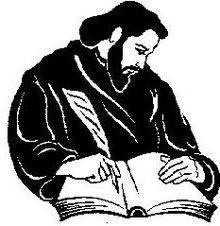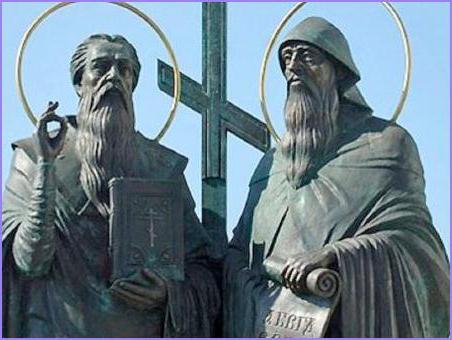A literary language is one in which the written language of a certain people, and sometimes several, exists. That is, school learning, written and everyday communication takes place in this language, official business documents, scientific papers, fiction, journalism, as well as all other manifestations of art, which are expressed in verbal, most often written form, but sometimes in oral form, are created . Therefore, oral-colloquial and written-book forms of the literary language are distinguished. Their interaction, correlation and occurrence are subject to certain laws of history.
Different definitions of the concept
Literary language is a phenomenon that is understood in its own way by different scholars. Some believe that he is nationwide, only processed by the masters of the word, that is, writers. Proponents of this approach have in mind primarily the concept of a literary language dating back to the new time, and at the same time among peoples with richly presented fiction. According to others, a literary language is a book, written language that resists live speech, that is, spoken language. The basis for this interpretation are those languages in which writing is long-standing. Still others believe that this is a language universally valid for one or another people, in contrast to jargon and dialect, which do not have such general validity. Literary language is always the result of joint creative activity of people. Such, in brief, is the characteristic of this concept.
Relationship with various dialects
Particular attention should be paid to the interaction and correlation of dialects and literary language. The more stable the historical foundations of various dialects, the more difficult it will be for a literary language to unite linguistically all members of a nation. Until now, dialects successfully compete with the common literary language in many countries, for example, Indonesia, Italy.
This concept also interacts with linguistic styles that exist within the boundaries of any language. They are varieties of it that have developed historically and in which there is a combination of features. Some of them can be repeated in other different styles, but a peculiar function and a certain combination of features distinguishes one style from the rest. Today, a large number of carriers use colloquial and colloquial forms.
Differences in the development of the literary language of different peoples
In the Middle Ages, as well as in the New Age, the history of the literary language of different peoples developed differently. Let us compare, for example, the role that the Latin language had in the culture of the Germanic and Romanesque peoples of the early Middle Ages, the functions that the French performed in England until the beginning of the 14th century, the interaction of Latin, Czech, Polish in the 16th century, etc.
Slavic language development
In an era when a nation is being formed and developed, unity of literary norms is taking shape. Most often, this happens first in writing, but sometimes the process can occur both in writing and in oral. In the Russian state of the period of the 16-17th centuries, work was going on to canonize and streamline the rules of the business state language along with the formation of common requirements for spoken Moscow. The same process takes place in other Slavic states, in which there is an active development of the literary language. For Serbian and Bulgarian it is less characteristic, since in Serbia and Bulgaria there were no conditions favorable for the development of business clerical and official language on a national basis. Russian, along with Polish and, to a certain extent, Czech, is an example of the national Slavic literary language, which retained its connection with the written ancient.

The national language , which has begun to break with the old tradition , is Serbo-Croatian, and also partly Ukrainian. In addition, there are Slavic languages that did not develop continuously. At a certain stage, this development was interrupted, so the emergence of national linguistic features in certain countries led to a break with the ancient, old-written tradition or later — these are the Macedonian, Belarusian languages. Consider in more detail the history of the literary language in our country.
History of Russian literary language

The oldest of the monuments of literature that have survived date back to the 11th century. The process of transformation and formation of the Russian language in the 18-19 centuries took place on the basis of its opposition to French - the language of the nobles. In the works of the classics of Russian literature, his possibilities were actively studied, new language forms were introduced. Writers emphasized his wealth and pointed to the advantages in relation to foreign languages. Disputes arose frequently on this issue. For example, disputes between Slavophiles and Westerners are known. Later, in the Soviet years, it was emphasized that our language is the language of the builders of communism, and during the reign of Stalin, an entire campaign was even conducted to combat cosmopolitanism in Russian literature. And at present, the history of the Russian literary language in our country continues to take shape, as it is constantly being transformed.
Folklore
Folklore in the form of sayings, proverbs, epics, fairy tales with its roots goes back in history. Samples of folklore were handed down from generation to generation, by word of mouth, and their contents were polished in such a way that only the most stable combinations remained, and language forms were updated as the language developed.
And after writing appeared, verbal creativity continued to exist. To peasant folklore in modern times was added urban and worker, as well as thieves (that is, prison camp) and army. Oral folk art today is most widely represented in jokes. It also affects the written literary language.
How did literary language develop in Ancient Russia?
The distribution and introduction of writing in Russia, which led to the formation of a literary language, is usually associated with the names of Cyril and Methodius.
In Novgorod and other cities of the 11-15th centuries birch bark letters were in use . The bulk of the surviving are private letters, which were business in nature, as well as documents such as court records, deeds, receipts, wills. There are also folklore (household chores, riddles, school jokes, conspiracies), literary and church texts, as well as notes that were educational in nature (children's scribbles and drawings, school exercises, warehouses, alphabets).

Introduced in 863 by the brothers Methodius and Cyril, the Church Slavonic writing was based on such a language as Old Slavonic, which came, in turn, from the South Slavic dialects, or rather, from the Old Bulgarian language, its Macedonian dialect. The literary activity of these brothers consisted primarily of translating the books of the Old and New Testaments. Their students translated many Greek books from Greek into Church Slavonic. Some scholars believe that Cyril and Methodius introduced the glagolitic, not Cyrillic, and the latter was developed already by their students.
Church Slavonic language
The language of the books, and not spoken, was Church Slavonic. It spread among numerous Slavic peoples, where it acted as the language of church culture. Church Slavonic literature was distributed in Moravia among the Western Slavs, in Romania, Bulgaria and Serbia - among the southern Slavs, in the Czech Republic, Croatia, Wallachia, and also in Russia with the adoption of Christianity. The Church Slavonic language was very different from the spoken one, the texts underwent a change in correspondence, gradually became Russified. The words came closer to the Russians, began to reflect the features characteristic of local dialects.
The first grammar books were compiled in 1596 by Lawrence Zinaniy and in 1619 by Meletiy Smotrytsky. At the end of the 17th century, the process of forming such a language as Church Slavonic basically ended.
18th century - reform of the literary language
M.V. Lomonosov in the 18th century made the most important reforms of the literary language of our country, as well as the system of versification. He wrote a letter in 1739, in which he formulated the basic principles of versification. Lomonosov, arguing with Trediakovsky, wrote that it is necessary to use the capabilities of our language instead of borrowing various schemes from others. According to Mikhail Vasilievich, poetry can be written in many feet: two-syllable (trochee, iambic), three-syllable ( amphibrach, anapaest, dactyl), but he believed that the division into spondae and pyrrhids is incorrect.
In addition, Lomonosov also compiled the scientific grammar of the Russian language. He described in his book its capabilities and wealth. The grammar was reprinted 14 times and later formed the basis of another work - the grammar of Barsov (was written in 1771), which was a student of Mikhail Vasilyevich.
Modern literary language in our country
Alexander Sergeyevich Pushkin, whose works are the pinnacle of literature in our country, is considered its creator. This thesis is still relevant today, although great changes have taken place in the language over the past two hundred years, and today there are clear stylistic differences between the modern language and the language of Pushkin. Despite the fact that the norms of the modern literary language have changed today, we still consider Alexander Sergeyevich's works as a model.
The poet himself, meanwhile, pointed out the main role in the formation of the literary language of N.M. Karamzin, since this glorious writer and historian, according to Alexander Sergeyevich, freed the Russian language from the yoke of the stranger and returned him freedom.